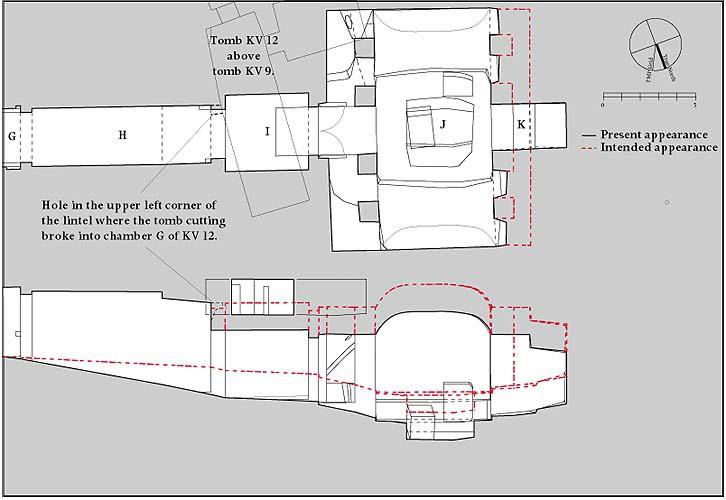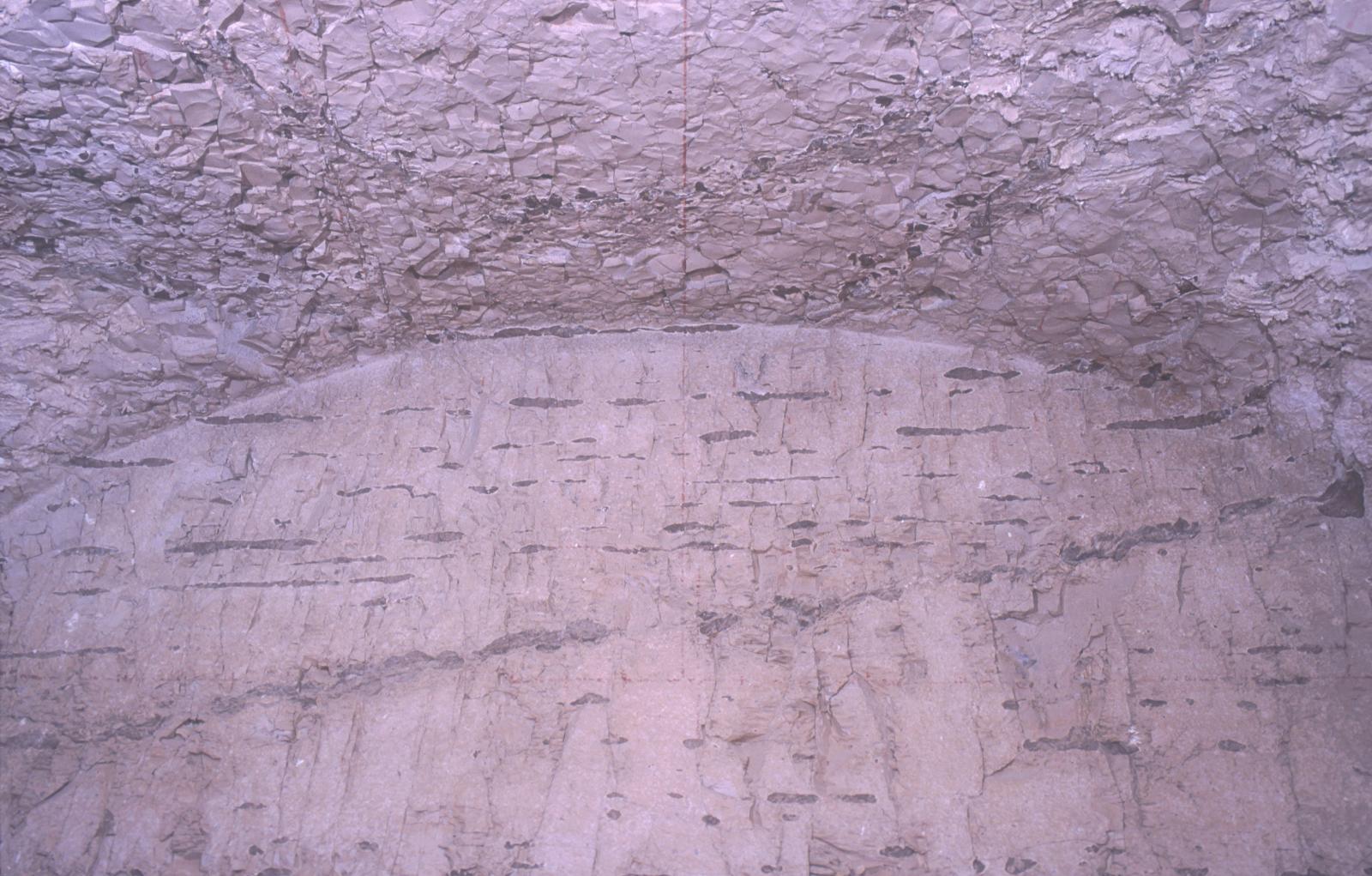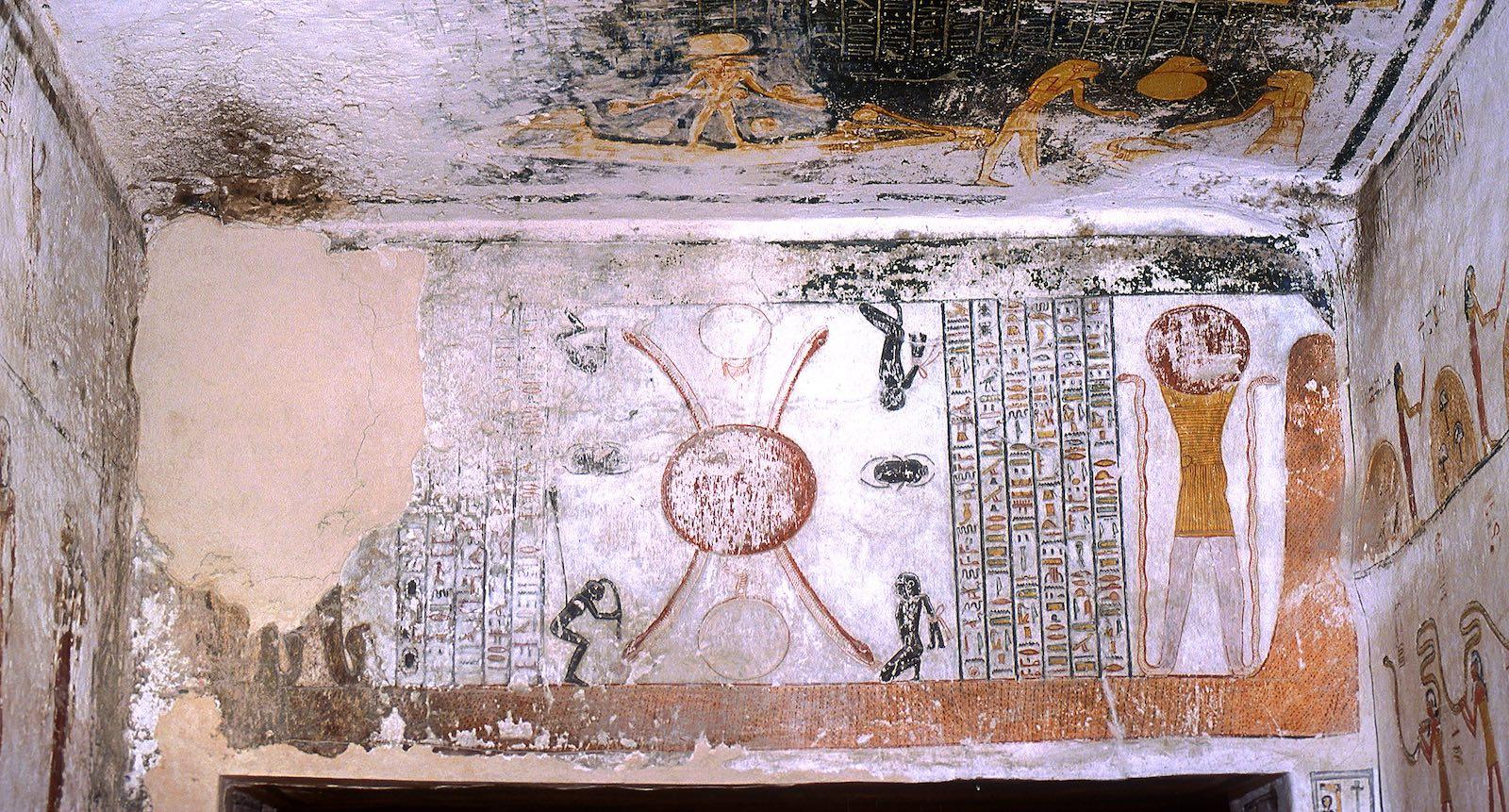The Valley of the Kings was used for over five hundred years and as more and more tombs were dug there the site became increasingly crowded. Earlier tomb entrances were covered by construction debris from later excavations, and precise knowledge of tombs' locations and layouts faded away because no master plan of the Valley seems to have existed. It was almost inevitable that workmen cutting new tombs would inadvertently break into earlier ones. Indeed, it is surprising that this did not happen more often.
On at least three occasions, quarrymen ran (or almost ran) into earlier tombs and had to alter their plans. This happened during the cutting of KV 47 (for Siptah in Dynasty 19) and again a generation later when they cut KV 11 (for Setnakht in Dynasty 20). It happened a third time, when workmen of Rameses VI began to lengthen KV 9 (which had begun under Rameses V) and ran into KV 12. In one case, work on the new tomb was abandoned; in two others, the plan of the later tomb was changed.

KV 47 and KV 32
KV 47, the tomb of Siptah, is typical of Dynasty 19 tombs: a succession of corridors leads to pillared chamber F and from there to a large, vaulted burial chamber (J). When cutting what was to be the burial chamber, workmen broke into side chamber Ja of KV 32, an undecorated tomb. The quarrymen studied the situation and decided to patch up the hole and dig further along the main axis of KV 47. What had been intended as the burial chamber therefore became another narrow corridor (J1) and the final burial chamber was cut several meters farther into the hillside, away from KV 32. Apparently, the workmen ran out of time before this extra work could be completed, for it was abandoned and the tomb left unfinished.

KV 11 and KV 10
The quarrymen who began work on KV 11 for Setnakht at the southern end of the Valley of the Kings did not know that another tomb, KV 10 belonging to Amenmeses, already lay nearby. While cutting corridor D1a of KV 11, workmen broke into side chamber Fa of KV 10. They immediately abandoned work here and instead, decided to enlarge another, already existing tomb for Setnakht's use. This was KV 14, originally dug in Dynasty 19 for Queen Tausert. Later, Setnakht's son and successor, Rameses III, returned to KV 11 and adopted it for his own burial. His workmen slightly changed the axial orientation of the tomb to avoid any more problems with KV 10 and went on to dig one of the largest tombs in the Valley of the Kings.
KV 9 and KV 12
A third breakthrough also occurred. While cutting the lower chambers of KV 9, Rameses VI's quarrymen accidentally broke into the rear chamber of KV 12. As a result, they changed the plans of the chambers they were digging (H and I), lowering ceilings and creating a sloping floor, in order to get around the problem.

